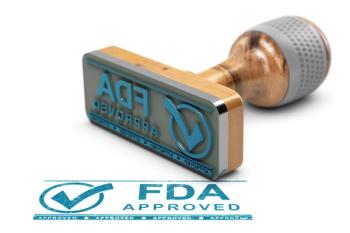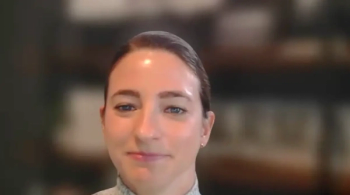Last month, I yielded to months of appeals from my wife of 24 years to take down the zip line we (well, mostly I) had installed in our backyard roughly a decade ago when our first 2 children were young. She was doing yard work at the time, so I borrowed her gloves and sadly removed the now rusty and frayed cable from the trees. As she moved on to the next azalea to plant, she grabbed the frayed cable to move it and impaled her hand with a rather large piece. She quickly removed it with her teeth (impressively, I might add), and I immediately said, “Time for a tetanus booster.”
The next morning, she yelled down the stairs, “I just scheduled with my GP!” I retorted, “Why are you doing that? Just go get it at the pharmacy!” Less than an hour later, she was boosted, and the whole event was free, convenient, and effective.
Community Pharmacies Are Now the Go-To Site for Adult Vaccinations
The latest IQVIA data put the percentage of adult vaccinations received at a pharmacy above 90%.1 Pharmacies continue to increase the number of adult vaccination encounters, with newer vaccine approvals such as for respiratory syncytial virus (RSV), updated pneumococcal vaccines, widespread availability of shingles vaccinations, and growth in recognition of their being an advantageous site of care for vaccinations such as tetanus boosters. Additionally, many states have passed laws or made changes to allow pharmacies to be a site of care for childhood vaccinations, as rates plummeted in the youngest demographics following the pandemic.
About the Author
Troy Trygstad, PharmD, PhD, MBA, is the executive director of CPESN USA, a clinically integrated network of more than 3500 participating pharmacies. He received his PharmD and MBA degrees from Drake University and a PhD in pharmaceutical outcomes and policy from the University of North Carolina. He has recently served on the board of directors for the Pharmacy Quality Alliance and the American Pharmacists Association Foundation. He also proudly practiced in community pharmacies across the state of North Carolina for 17 years.
Vaccine Rates Are Falling for Many Established Vaccines, Rising for Less Established
The falling rates of childhood vaccination against measles are well documented, and now (perhaps unsurprisingly) it appears that whooping cough will emerge in our consciousness. Measles vaccination rates have fallen below the key threshold of 95% to a median of 92%, and in certain areas and subpopulations to 50%.2 Similarly, vaccine rates for whooping cough (pertussis) have fallen from 95% to 90%.3 Two disease states that have been out of sight, out of mind for my nearly 5 decades of life have reemerged, and most Americans would struggle to identify the signs, symptoms, and severity of many diseases we haven’t thought twice about for more than half a century.
As newer vaccines have emerged, their use has grown steadily. Shingles vaccine rates rose from less than 7% in 2008 to roughly 35% in 2018.4 Rates plateaued at that point with high out-of-pocket costs for many and decreased availability but then received a boost (pun intended) from the Inflation Reduction Act’s elimination of co-payments, leading to a 46% increase in administrations year over year in 2023 for Part D recipients.5 RSV vaccine administration continues to increase, now with more than 8 million per week, up more than 20% from just 6 months prior.6
Given all these trends, it appears we have arrived at a period in which distinct populations have emerged: the “vaccine enthusiastic,” who will pay co-payments and seek out new vaccines, and the “vaccine willing,” who trust in vaccines and, if there are no barriers such as inconvenience or out-of-pocket cost getting in the way, will get vaccinated. We also have a growing group of individuals who are vaccine hesitant or resistant. Although there has never been complete immunization of populations for any disease, historically, gaps have been almost entirely due to a matter of access or, in limited cases, religious beliefs, rather than based on opinions or judgments of vaccinations.
Not Just the US: Vaccine Hesitancy Is Growing Worldwide
Opinions about vaccinations are now a thing. They were not so much before the turn of the century, and the COVID-19 immunization experience cultivated a lot of discussion and awareness of vaccination types and strategies, both biomedically and socially. Both provaccine and antivaccine sentiments are stronger than ever in the lay population. A UNICEF report published in 2023 examined the perception of vaccine importance across the globe, in which it reported that vaccine confidence fell in 52 of 55 countries as a result of the COVID-19 pandemic, with some countries experiencing a drop of 30% to 45%.7 Globally, 47 million children went without a routine vaccination in 2023.7
Data continue to indicate a substantial shift in sentiment around the pandemic response. Parental vaccine hesitancy grew substantially from 2020 to 2022, particularly in specific communities. Although prepandemic hesitancy was widely publicized in affluent communities and enclaves of alternative medicine, post COVID-19 it has grown rapidly among the poorest and most socially vulnerable communities. Roughly 10% of parents of 0- to 17-year-olds reported an overall drop in confidence in childhood vaccinations’ safety, importance, and effectiveness, reaching 38% in communities with low COVID- 19 vaccination rates.8
A Framing Shift Toward Shared Decision-Making With Health Care Professionals
Interpersonal relationships and patient-provider trust increasingly drive vaccination uptake, particularly in communities with vaccine hesitancy and resistance. Policy makers increasingly rely on conversations with health care providers and, in some cases, argue deference to patient autonomy, regardless of the evidence driving community-level opinions, judgments, and, ultimately, acceptance or rejection.
As the most frequented setting of care, staffed by some of the most trusted and knowledgeable personnel, pharmacies are on the front lines of opinion formation and service to the community. As rates of vaccine-preventable diseases rise, education on the consequences of forgoing vaccinations, while respecting opinions, religious beliefs, and dynamic social phenomena, will often fall to the pharmacist in individual and community-level conversations.
REFERENCES
1. Trends in Vaccine Administration in the United States. IQVIA. January 13, 2023. Accessed April 28, 2025. https://www.iqvia.com/insights/the-iqvia-institute/reports-and-publications/reports/trends-in-vaccine-administration-in-the-united-states
2. Cleghorn R. Measles cases are surging—these 6 charts reveal why. Scientific American. March 20, 2025. Accessed April 28, 2025. https://www.scientificamerican.com/article/see-how-measles-outbreaksflourish-where-vaccination-rates-fall/
3. Seither R, Yusuf OB, Dramann D, et al. Coverage with selected vaccines and exemption rates among children in kindergarten – United States, 2023-24 school year. MMWR Morb Mortal Wkly Rep. 2024;73(41):925-932. doi:10.15585/mmwr.mm7341a3
4. Terlizzi EP, Black LI. Shingles vaccination among adults aged 60 and over: United States, 2018. National Center for Health Statistics; 2020.NCHS data brief no. 370. Accessed April 28, 2025. https://www.cdc.gov/nchs/products/databriefs/db370.htm
5. Qato DM, Romley JA, Myerson R, Goldman D, Fendrick AM. Shingles vaccination in Medicare Part D after Inflation Reduction Act elimination of cost sharing. JAMA. 2024;331(23):2043-2045. doi:10.1001/jama.2024.7348
6. Respiratory syncytial virus (RSV) vaccinations administered in pharmacies and physician medical offices, adults, United States. CDC. April 23, 2025. Accessed April 28, 2025. https://www.cdc.gov/rsvvaxview/dashboard/adult-vaccinations-administered.html
7. New data indicates declining confidence in childhood vaccines of up to 44 percentage points in some countries during the COVID-19 pandemic. Press release. UNICEF. April 20, 2023. Accessed April 28, 2025.https://www.unicef.org/rosa/press-releases/new-data-indicates-declining-confidence-childhood-vaccines-44-percentage-points-some
8. Grills LA, Wagner AL. The impact of the COVID-19 pandemic



















































































































































































































